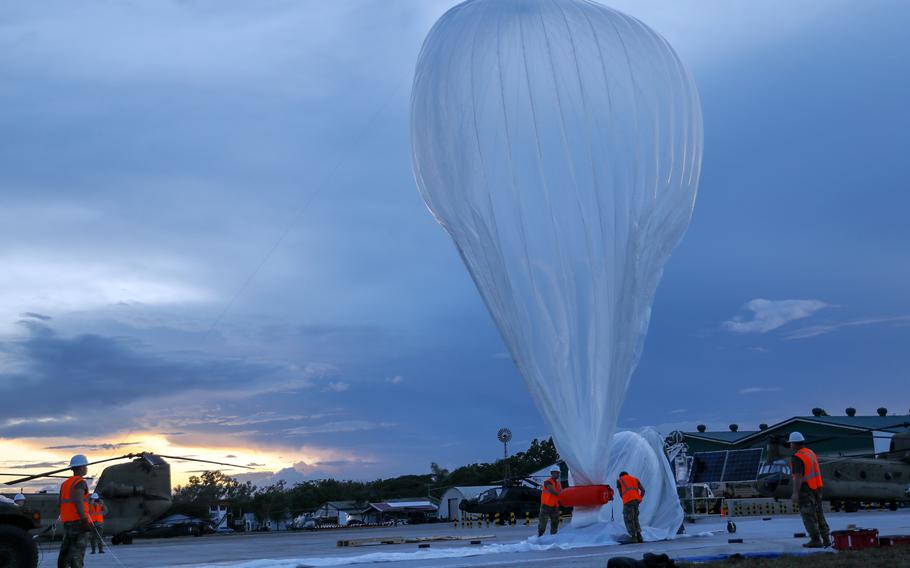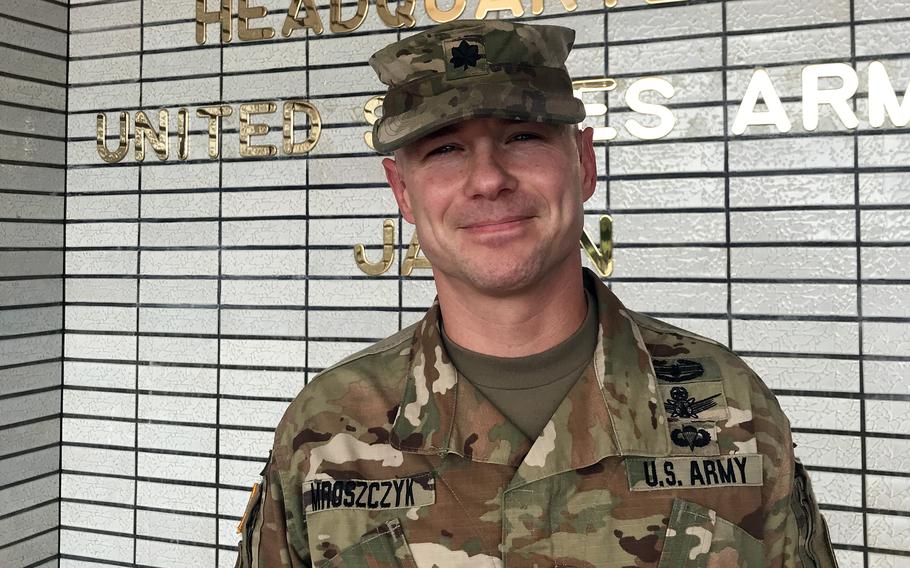
U.S. soldiers launch a Thunderhead High-Altitude Balloon System during the annual Balikatan drills at Fort Magsaysay in Nueva Ecija, Philippines, April 1, 2022. (Seth Robson/Stars and Stripes)
The Army is simulating high-altitude balloon flights in Japan this month as part of a plan to expand intelligence gathering in the Indo-Pacific region.
The 1st Multi-Domain Effects Battalion, participating in this month’s Orient Shield exercise alongside Japanese troops on the northern island of Hokkaido, has been experimenting with balloons, according to battalion commander Lt. Col. Joseph Mroszczyk.
“We’re the only force structure in the Army that has high-altitude people whose job it is to operate these capabilities,” he told Stars and Stripes on Saturday at Camp Zama, home of U.S. Army Japan outside Tokyo.
Balloon operations are only being simulated during Orient Shield, which began Sept. 14 and ends Saturday, but the battalion’s high-altitude platoon has actually launched them in the United States, Mroszczyk said.

Army Lt. Col. Joseph Mroszczyk, commander of the 1st Multi-Domain Effects Battalion, poses at Camp Zama, Japan, Sept. 16, 2023. (Seth Robson/Stars and Stripes)
The battalion, based at Joint Base Lewis-McChord, Wash., has flown several types of balloons to “extend the [sensor] network depth,” he said, adding that high-altitude operations take place between 60,000 and 100,000 feet.
Balloons aren’t new to the battlefield, he said, noting the historic use of the aircraft as military observation platforms.
Small, modern balloons tested by the military can be deployed without much effort. The trick is to launch them from the right place to take advantage of the wind, Mroszczyk said.
In February, Japan’s Ministry of Defense announced that balloons spotted over the country between 2019 and 2021 were presumed to have been Chinese spy craft. That month, the U.S. military shot down four objects over U.S. and Canadian airspace, including one that, officials say, was a Chinese spy balloon.
In April 2022, during the annual Balikatan exercise in the Philippines, the Army launched a Thunderhead High-Altitude Balloon System, Aviation Week reported Aug. 14.
“Thunderhead Balloon Systems have made long duration and navigational stratospheric missions a proven reality,” South Dakota-based manufacturer Aerostar states on its website. “By leveraging directional wind patterns at high altitudes, Aerostar’s Thunderhead Balloon Systems offer groundbreaking capabilities for navigation and persistence over areas of interest.”
Mroszczyk‘s battalion, which falls under U.S. Army Pacific’s 1st Multi-Domain Task Force, is building up to include 500 soldiers next year, he said. The battalion includes sub-units focused on intelligence, information, cyber, electronic warfare and space operations.
An extended-range sensing and effects company includes platoons that fly unmanned aircraft and high-altitude balloons, he said.
Balloons are likely to be part of the Army’s sensor mix but there won’t likely be many, according to Grant Newsham, a retired Marine colonel and senior researcher with the Japan Forum for Strategic Studies in Tokyo.
“They are a useful system — especially for wide area surveillance — and are fairly easy to deploy and relatively cheap,” he said in an email Saturday.